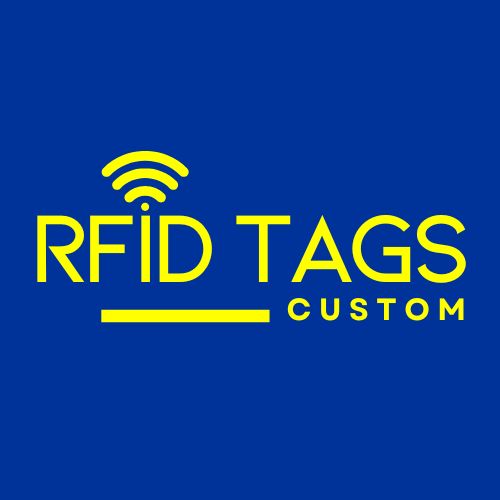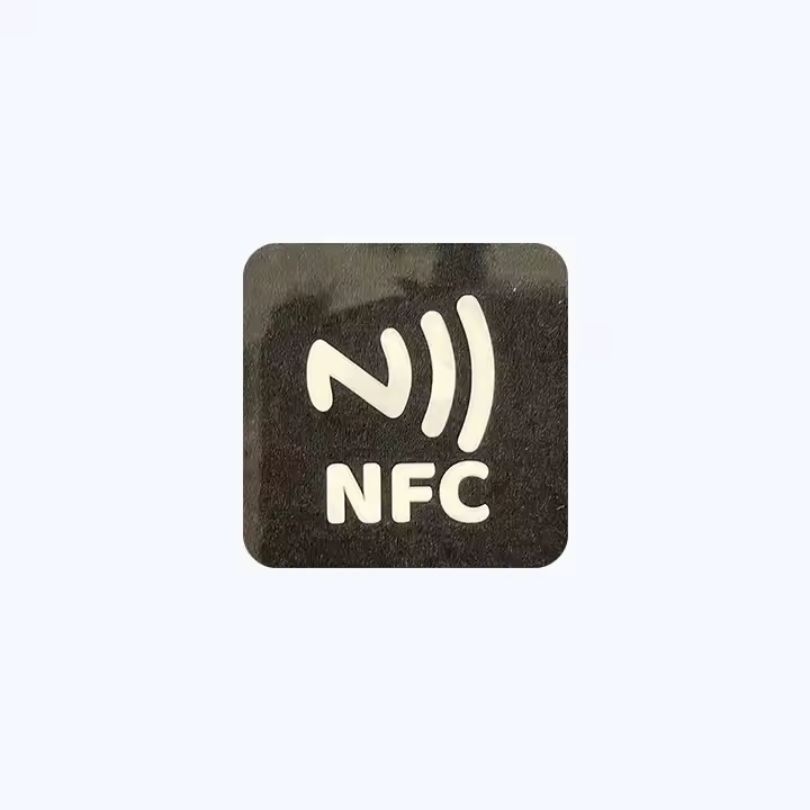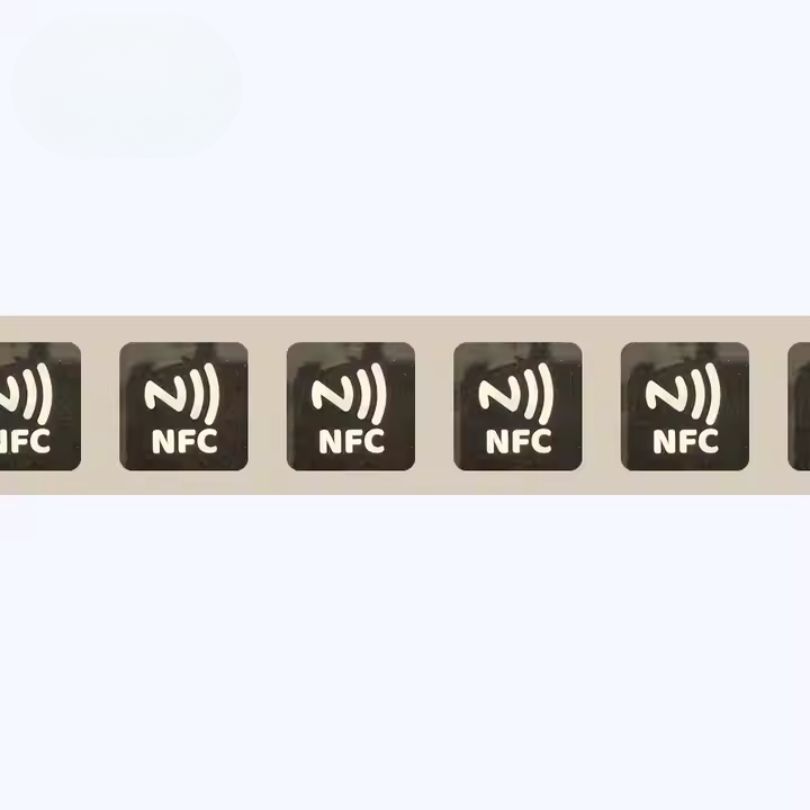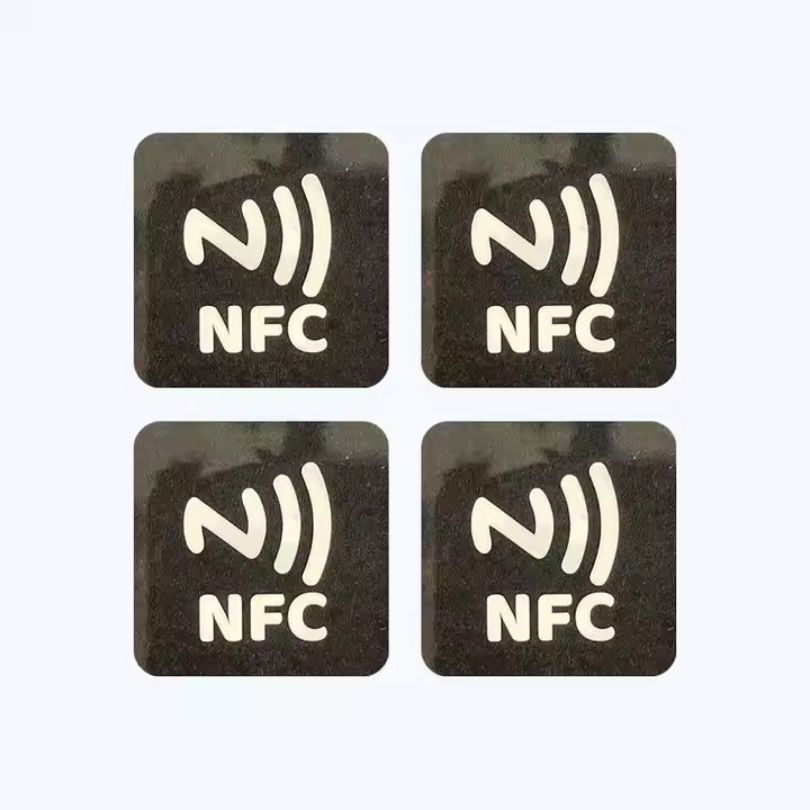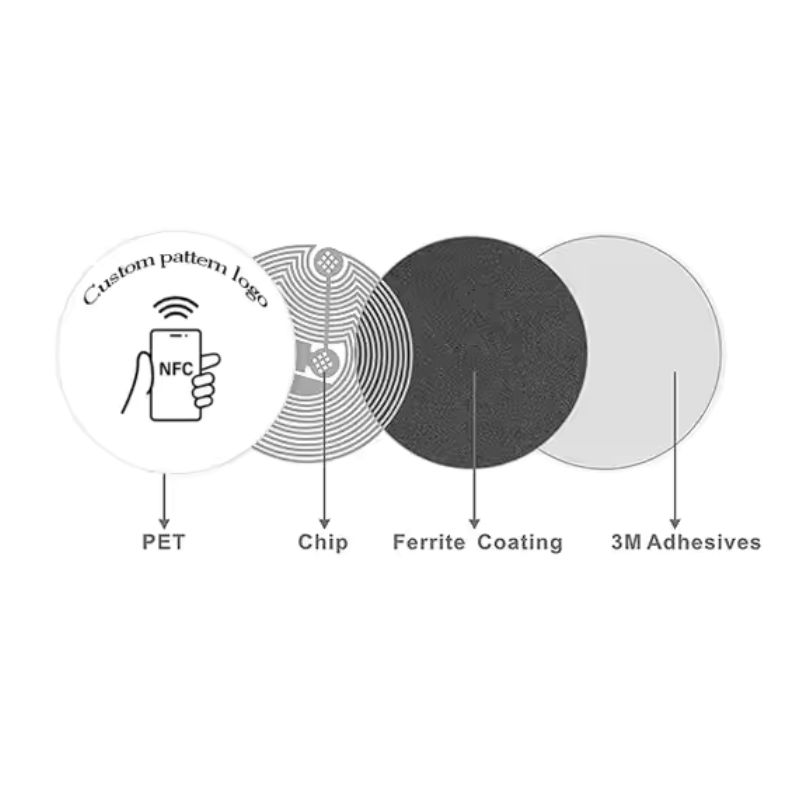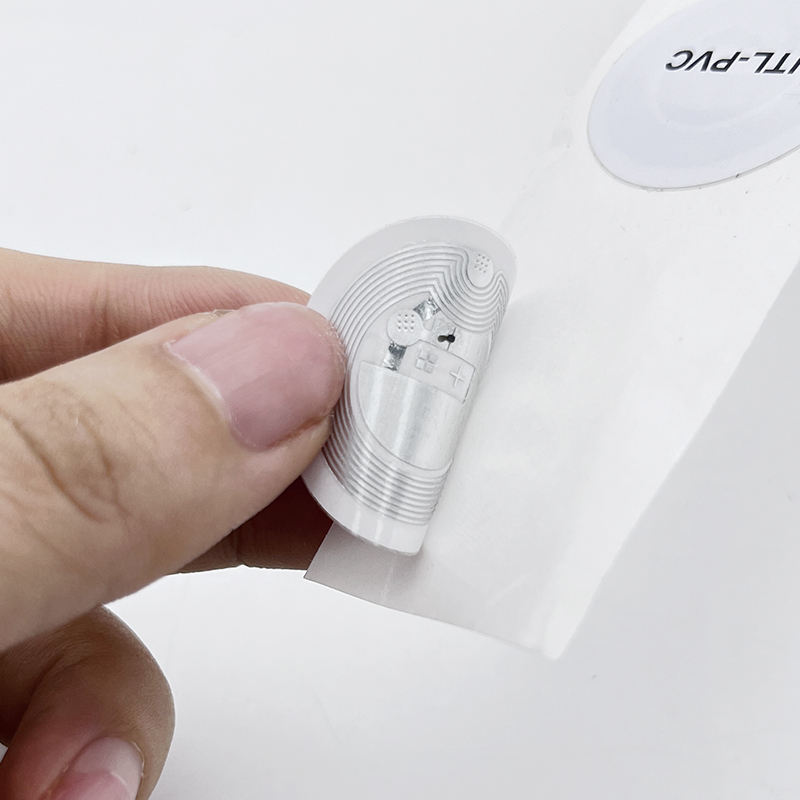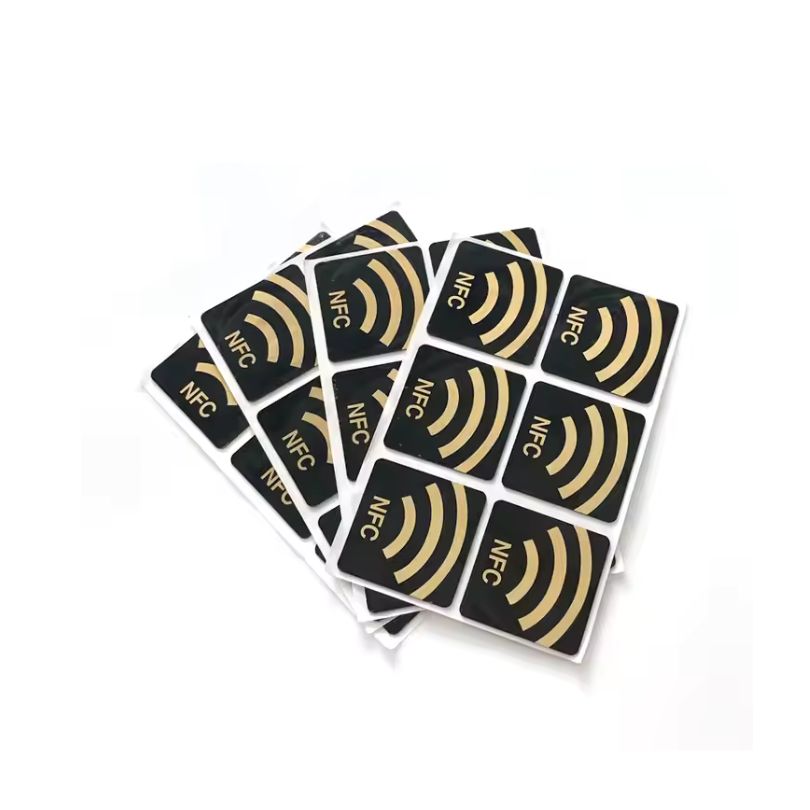
- Home
- Custom RFID Tags
- 13.56mhz Programmable NFC Tags Wet Inlay Sticker
13.56mhz Programmable NFC Tags Wet Inlay Sticker
Unleash Contactless Potential: Revolutionizing Applications with 13.56MHz Programmable NFC Tags
In our hyper-connected world, NFC technology, particularly 13.56MHz programmable NFC tags in wet inlay sticker format, is revolutionizing industries with its versatile and cost-effective solution for contactless communication.
Their compact size, ease of integration, durability, and dynamic programmability allow for real-time tracking, personalized messaging, and seamless information access, making them a powerful tool for enhancing customer engagement, streamlining operations, and improving data accuracy across various applications. Unlike barcodes, they don’t require a line of sight and can be discreetly embedded, making them an unobtrusive yet highly effective solution.
Applications of Programmable NFC Tags
- Smart Packaging: Enhanced product information & interactive experiences.
- Retail & Marketing: Exclusive promotions & loyalty rewards.
- Healthcare: Improved medication tracking & patient safety.
- Asset Tracking: Loss prevention & inventory management.
- Access Control: Secure & convenient access management.
- Gaming & Entertainment: Unlocking digital content & immersive experiences.
Selecting the Right Programmable NFC Tag
When choosing 13.56MHz programmable NFC tags, consider the following factors:
Chip Type: Select the appropriate NFC chip type based on the required memory capacity, security features, and compatibility with existing systems.
Size and Shape: Choose a size and shape that is suitable for the intended application and the available space.
Durability and Environmental Resistance: Select tags designed to withstand the environmental conditions they will be used, such as temperature, humidity, and chemical exposure.
Adhesive Properties: Choose tags with an adhesive compatible with the surface to which they will be attached and will provide a secure bond.
Technical Specifications
| Feature | Specification |
| Frequency | 13.56 MHz |
| Protocol | ISO/IEC 14443-A |
| Chip Option | NTAG213 (Typical) |
| Shape | Round |
| Form Factor | Wet Inlay Sticker |
| Diameter | 30mm (Typical) |
| Memory | 144 Bytes (NTAG213) |
| Read/Write Cycles | 100,000 |
| Data Retention | 10 Years |
| Operating Temperature | -25°C to +70°C |
| Special Features | Waterproof, Readable, Lightweight |
13.56MHz programmable NFC tags offer a powerful and versatile solution for various applications. Their compact size, ease of integration, and ability to be dynamically updated with new information make them an ideal choice for businesses looking to enhance customer engagement, streamline operations, and improve data accuracy.
As NFC technology continues to evolve, we expect to see even more innovative applications emerge, further solidifying its position as a key enabler of the connected world.
Get Your Custom RFID Tags
As a leading custom RFID tag manufacturer, we craft solutions based on the unique needs of your operation. We offer a wide range of customization options, including material, size, frequency, encoding, and read distance, ensuring each RFID Tag is perfectly customized to your requirements. No matter what application you use RFID tags for, we can provide rugged, reliable RFID tags that meet the highest quality and durability standards. Here are the main ways we customize RFID tags to fit your needs.

Material Selection
Material is key for customizing RFID tags. Plastic works in harsh conditions, while softer materials suit delicate spaces. Different materials also affect signal performance. Pick what fits your use case to ensure your tags last and work reliably.

Customized Size
Size shapes usability. Small tags fit tight spaces or tiny items, while larger tags are easily read. In crowded areas, sleek tags prevent clashes. Align shape and dimension with your goods for visibility, convenience, and performance.

Frequency Requirements
Choose LF, HF, or UHF based on read range, speed, and interference. LF and HF resist metals and liquids but have shorter ranges. UHF offers an extended range yet may face signal blocks. Match frequency to your environment for reliable performance.

Reading Distance
Define the distance at which you have to read the tag. Short distances work for retail checkouts, while warehouses may need meters of coverage. Antenna design, reader settings, and power outputs affect range.Adjust these factors to capture data accurately at the distance you need.

Encode
Plan how data is stored on each tag. Some only hold an ID, while others contain detailed info. Decide if you need a simple EPC or added user memory. Ensure your chosen format works with existing software. Proper encoding streamlines processes and slashes errors.

Application Environment
Consider real-world conditions. Temperature swings, humidity, and chemicals can degrade tags. For outdoor use, opt for UV-resistant casings. In healthcare or food settings, ensure compliance with safety rules. Matching your tags to the environment maximizes their lifespan.
Related Products
Customize any RFID tags from our factory to meet your requirements.
